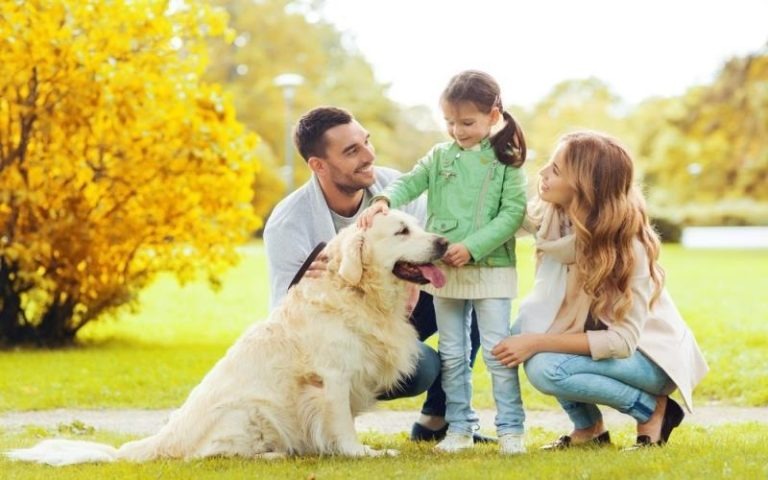
Chatty Champions: Top 10 Most Talkative Bird Breeds and What They’re Saying
Discover the world’s most talkative bird breeds, their unique vocal abilities, communication styles, and surprising insights into what these feathered conversationalists might really be saying.
🐶 Pet Star
29 min read · 1, Jun 2025

Introduction: The Fascinating World of Talking Birds
Birds have long captivated humans with their melodic songs, vivid colors, and astonishing intelligence. Among these remarkable creatures, some species stand out for their ability to mimic human speech and engage in vocal communication that feels almost conversational.
From the classic African Grey’s precise vocabulary to the noisy charm of the Amazon parrots, these talkative birds don’t just squawk—they express, entertain, and connect. But what makes certain bird breeds more talkative than others? And what are they really trying to say when they mimic words or chatter among themselves?
In this article, we’ll explore the top 10 most talkative bird breeds, examining their natural behaviors, linguistic talents, and the science behind their vocalizations. We’ll uncover fascinating anecdotes, share expert insights, and help bird lovers understand what these feathered talkers might be communicating.
What Makes a Bird Talkative?
Understanding Avian Vocal Communication
Birds communicate through calls, songs, and mimicry. Vocalization serves various purposes: attracting mates, defending territory, warning of danger, or social bonding. Some species are gifted vocal imitators, capable of replicating sounds from their environment—including human speech.
The ability to talk isn’t just about sound reproduction. It requires complex brain structures dedicated to learning and memory, social interaction, and sometimes, a desire to engage with their human companions.
Factors Influencing Talkativeness
- Species traits: Certain species are naturally predisposed to vocal mimicry.
- Environment: Birds raised in stimulating social environments tend to talk more.
- Individual personality: Like people, birds vary—some are chatterboxes; others are quieter.
- Training and interaction: Consistent human interaction and training encourage talking.
The Top 10 Most Talkative Bird Breeds
1. African Grey Parrot (Psittacus erithacus)
Known as the gold standard of talking birds, African Greys boast extraordinary vocabulary skills. Some individuals learn hundreds of words and even use them contextually. Their intelligence rivals that of a young child, making them masters of mimicry and comprehension.
African Greys have been documented using words in meaningful ways, expressing desires, emotions, and even humor. Research shows their ability to associate words with objects and concepts, highlighting cognitive complexity beyond simple mimicry.
2. Amazon Parrots (Genus Amazona)
Amazon parrots are renowned for their loud, clear voices and playful personalities. Species like the Yellow-naped Amazon and Blue-fronted Amazon are particularly vocal, often using phrases learned from humans with impressive clarity.
These parrots are social, energetic, and often imitate not just speech but also environmental sounds, laughter, and music. Their chatter is often enthusiastic and expressive, which makes them favorites among parrot enthusiasts.
3. Budgerigar (Melopsittacus undulatus)
Budgerigars, or budgies, are small but mighty talkers. Despite their size, male budgies in particular are capable of learning a surprising number of words and phrases. They have a sweet, clear tone and can string together sentences when trained consistently.
Budgies are often recommended as first talking birds because of their playful nature and impressive vocal skills relative to their size.
4. Indian Ringneck Parakeet (Psittacula krameri)
Indian Ringnecks are charismatic birds known for their distinct rings around their necks and their sharp, clear speech. With proper socialization, these parakeets develop extensive vocabularies and can speak with a surprisingly human-like accent.
Their talking ability combined with a slightly mischievous personality makes them engaging companions.
5. Eclectus Parrot (Eclectus roratus)
The Eclectus parrot is notable for its vivid sexual dimorphism—males are bright green, females rich red—and its soft, melodious voice. Eclectus parrots are excellent talkers, often more inclined to sing and mimic tunes than chatter incessantly.
They tend to have gentle voices and often learn words with distinct emotional expressions, making their communication feel warm and personal.
6. Quaker Parrot (Monk Parakeet, Myiopsitta monachus)
Quaker parrots are small but vocally vibrant. Known for their social intelligence and adaptability, these parrots speak clearly and often develop impressive vocabularies.
They are extremely social and enjoy interaction, which fuels their eagerness to mimic human speech and sounds around them.
7. Cockatoos (Family Cacatuidae)
Cockatoos, including species like the Sulphur-crested and Goffin’s cockatoos, are expressive birds with loud, clear voices. While their talking ability may not be as refined as African Greys or Amazons, they compensate with enthusiastic mimicry and interactive calls.
Their social nature and emotional expressiveness often make their vocalizations feel like genuine communication.
8. Monk Parakeet (Myiopsitta monachus)
Often confused with Quaker parrots (they are the same species), Monk Parakeets are known for their chatter, social calls, and mimicry. These birds are especially talkative in groups and show complex social vocalizations in the wild.
Their tendency to build communal nests also reflects their communicative social structure.
9. Ring-necked Parakeet (Psittacula krameri)
Closely related to Indian Ringnecks, these birds are highly vocal and capable mimics. They thrive in urban environments, often incorporating local sounds into their repertoire.
Their loud calls and ability to imitate human speech make them highly engaging, especially when hand-raised.
10. Meyer's Parrot (Poicephalus meyeri)
Though less well-known than African Greys, Meyer's parrots are excellent talkers. They possess a clear, soft voice and a playful demeanor that encourages vocal interaction.
Their moderate size and social nature make them suitable for owners seeking an intelligent yet slightly quieter talker.
What Are Talkative Birds Saying?
Mimicry vs. Communication
Birds that talk are not simply parroting words—they are engaging in a complex form of communication. While much of their speech is mimicry, research shows some birds understand context and use words purposefully.
Emotional Expression
Birds often use vocalizations to express feelings like excitement, fear, or affection. For example, an Amazon parrot might squawk loudly when seeking attention or softly whistle to express contentment.
Social Connection
Many talking birds develop personalized “languages” with their owners, using specific words or sounds as calls for food, play, or comfort. This social interaction strengthens the bond between bird and human.
Environmental Awareness
Birds also mimic environmental sounds—doorbells, phones, alarms—as a way to connect with their surroundings and sometimes alert their owners to unusual events.
How to Encourage Talking in Pet Birds
Patience and Repetition
Consistent, gentle repetition is key to teaching birds to talk. Speaking clearly and frequently to your bird increases chances of mimicry.
Positive Reinforcement
Rewarding your bird with treats or affection when they attempt to speak encourages more vocalization.
Social Interaction
Birds that feel connected and engaged with their owners tend to be more talkative. Interaction stimulates their cognitive and vocal abilities.
Creating a Stimulating Environment
Background noise like radio or TV and having mirrors or toys can encourage a bird to vocalize.
Challenges of Owning Talkative Birds
Noise Levels
Talkative birds can be very loud and vocal at inconvenient times, which requires patience and tolerance.
Behavioral Needs
Highly intelligent talkers often need mental stimulation; without it, they may develop destructive behaviors.
Longevity and Commitment
Many talkative birds live for decades, requiring long-term commitment and care.
The Science Behind Avian Speech
Brain Structures
Birds capable of mimicry have well-developed vocal learning centers, similar to those in humans.
Learning Mechanisms
Imitation, reinforcement, and social bonding help birds learn to speak.
Comparative Cognition
Studies show talking birds have cognitive skills rivaling primates in areas such as problem-solving and communication.
The Future of Avian Communication Research
Advances in Neuroscience
Emerging brain imaging technologies are revealing more about how birds process speech and mimicry.
Artificial Intelligence and Birdsong
AI algorithms are being developed to decode complex bird vocalizations, potentially unlocking new understandings of their “languages.”
Conservation Through Communication
Understanding vocal behavior can aid in monitoring wild populations and improving captive breeding programs.
Interesting Facts About Talkative Birds
- African Greys can learn up to 1,000 words.
- Budgerigars are one of the few non-mammal species shown to use syntax.
- Amazon parrots are known to imitate laughter and household sounds.
- Cockatoos are among the most emotional talkers, often expressing jealousy.
- Some parakeets have been recorded singing entire songs learned from the radio.
Conclusion
The world of talkative birds is a fascinating blend of biology, intelligence, and social connection. From the impressive vocabulary of the African Grey parrot to the lively chatter of budgerigars and the expressive calls of cockatoos, these birds provide more than just entertainment—they offer insights into communication, cognition, and companionship. Their ability to mimic human speech is not merely parroting; it’s a complex interplay of learning, emotion, and interaction that reflects their sophisticated brain structures and social needs.
As we’ve seen, talkative birds are capable of expressing moods, desires, and sometimes even a rudimentary understanding of the words they use. They form deep bonds with their human caregivers, often developing unique “languages” that strengthen social ties and enrich daily life. However, owning a talkative bird also comes with responsibilities—providing adequate mental stimulation, managing noise levels, and respecting their long lifespans and complex needs.
The science behind avian speech continues to evolve, revealing parallels between bird and human communication systems that are reshaping how we understand intelligence and language in the animal kingdom. With ongoing research and technological advances, we may soon unlock even more secrets about what our feathered friends are really saying.
Ultimately, talkative birds remind us that communication is more than words—it’s about connection, emotion, and presence. Whether you’re a seasoned bird owner or simply curious about these charismatic creatures, understanding their voices deepens our appreciation for their remarkable talents and the meaningful relationships they share with us.
Talkative Birds: Q&A
Q1: What makes a bird a “talkative” species?
A: Talkative species have specialized brain structures for vocal learning, allowing them to mimic sounds and human speech with greater complexity and intent.
Q2: Which bird is considered the best talker?
A: The African Grey parrot is widely regarded as the most proficient talker, known for its large vocabulary and contextual use of words.
Q3: Can all parrots learn to talk?
A: Not all parrots mimic human speech equally; species like Amazons and Budgerigars are good talkers, while others may have limited vocal abilities.
Q4: How do birds learn to mimic human speech?
A: Birds learn through imitation, repetition, and positive reinforcement, often needing consistent social interaction to develop vocabulary.
Q5: Do talking birds understand the meaning of words?
A: Some, like African Greys, demonstrate understanding by using words in context, while others mimic sounds without grasping meaning.
Q6: Why do birds mimic environmental sounds?
A: Mimicking environmental sounds helps birds engage with their surroundings and may serve social or alert functions.
Q7: Are male birds better talkers than females?
A: In some species, males are more vocal, but talking ability varies widely by individual rather than gender alone.
Q8: How can I encourage my bird to talk?
A: Use repetition, positive reinforcement, social interaction, and a stimulating environment to encourage talking.
Q9: Are talkative birds louder than other birds?
A: Many talkative birds can be loud and vocal, which requires consideration before bringing them into a home setting.
Q10: How long do talking birds live?
A: Many talkative species, like African Greys and Amazons, can live 40 to 60 years or more, making them lifelong companions.
Similar Articles
Find more relatable content in similar Articles

Sustainable Pet Products: What to Look for in 2025...
As sustainability becomes a ce.. Read More

Vegan Pet Toys and Accessories That Last Longer...
As pet owners grow more eco-co.. Read More

How Pets Strengthen Family Bonds...
Pets are more than just compan.. Read More

How Climate Change Affects Wild and Domestic Animals...
Climate change is dramatically.. Read More
Explore Other Categories
© 2024 Copyrights by rPets. All Rights Reserved.